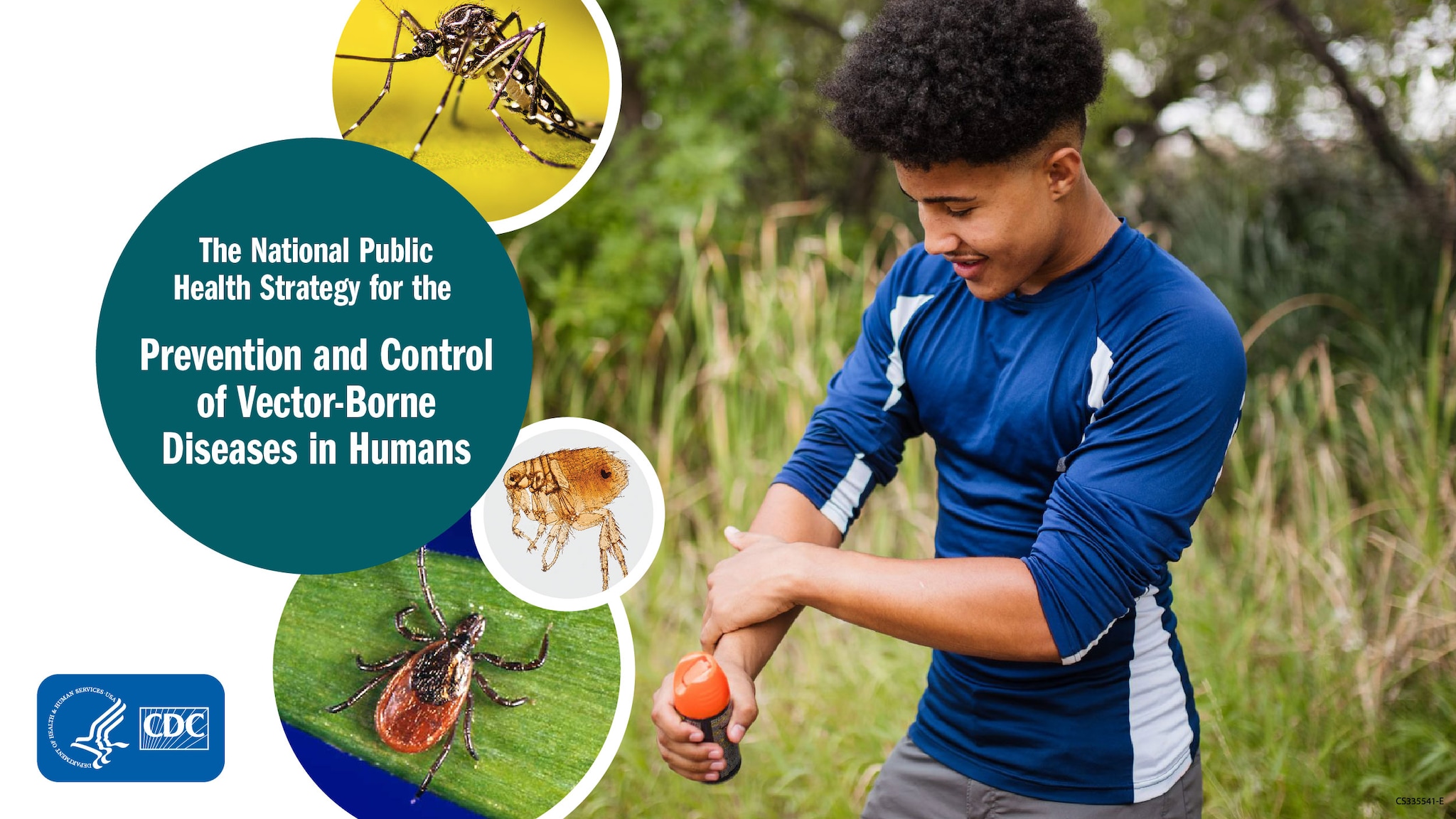What to know
- A National Strategy is needed to address the rising public health threat of vector-borne diseases (VBDs).
- VBDs increasingly threaten the health and well-being of people in the United States, with reported cases doubling over the last two decades.
- The United States is not adequately prepared to respond to these threats.

VBD National Strategy to Protect People
The problem
Vector-borne diseases (VBDs) increasingly threaten the health and well-being of people in the United States, with reported cases doubling over the last two decades. Yet the United States is not adequately prepared to respond to these threats.
Vectors—biting insects and arachnids like mosquitoes, ticks, fleas, and lice—can spread germs that make people sick. These diseases are major causes of death and illness worldwide. More action is needed to protect people from VBDs.
A coordinated approach
Together, U.S. federal entities developed The National Public Health Strategy to Prevent and Control of Vector-Borne Diseases in People (VBD National Strategy) to address the rising public health threat of VBDs. The VBD National Strategy includes critical federal government activities to prevent and control VBDs.
Successfully implementing the VBD National Strategy depends on continued collaboration within and outside of the federal government. Collaborators include
- The federal government
- Public health partners, such as nonprofit organizations and associations of medical, entomological, and vector control professionals
- State, tribal, local, and territorial health departments
- Healthcare providers
- Policy and decision-makers, including Congress and elected community leaders
- Vector control organizations
- Academic and industry partners
- The public, including patients, patient advocates, and patient-driven research organizations
Goals and public health outcomes
Vision: A nation where VBDs no longer threaten human health and well-being.
Mission: Protect people from illness, suffering, and death due to VBDs.
Goals
- Better understand when, where, and how people are exposed to and get sick or die from VBDs.
- Develop, evaluate, and improve tools, methods, and guidance to diagnose VBDs and their pathogens.
- Develop, evaluate, and improve tools, methods, and guidance to prevent and control VBDs.
- Develop and assess drugs and treatment strategies for VBDs.
- Disseminate and implement public health tools, programs, and collaborations to prevent, detect, diagnose, and respond to VBD threats.
Targeted public health outcomes
The VBD National Strategy encourages more collaboration and innovation to reach targeted public health outcomes for the United States, such as
- Eliminate deaths from Rocky Mountain spotted fever in Arizona tribal communities by 2025.
- Eliminate sustained local spread of dengue by 2035. Sustained is defined as having more than 10 related cases in one jurisdiction.
- Reduce the number of Lyme disease cases (laboratory confirmed) 25% by 2035, compared to 2022.
- Reduce the annual number of West Nile virus neuroinvasive disease cases to below 500 by 2035.
Press release
U.S. Health and Human Services Press Release on the VBD National Strategy (February 2024)
Background
The VBD National Strategy is the largest formal federal coordination focused on VBD prevention and control. The VBD National Strategy was co-led by the U.S. Department of Health and Human Services and CDC and developed in collaboration with six federal departments and the Environmental Protection Agency.
In December 2019, the Kay Hagan Tick Act was signed into law authorizing activities to prevent and control VBDs. This included developing a national strategy to expand upon a framework published in September 2020, titled National Public Health Framework for the Prevention and Control of Vector-Borne Diseases in Humans. The VBD National Strategy builds upon the framework.
